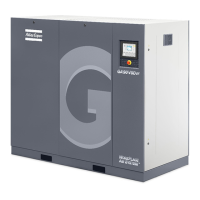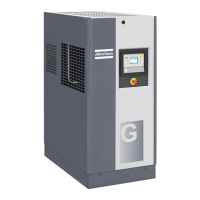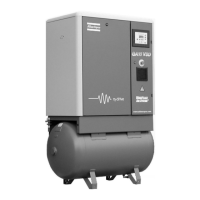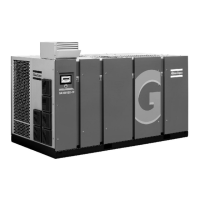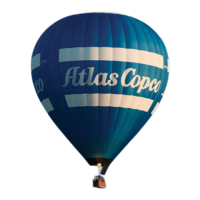Field installation
The main components are assembled ex-factory as a compact unit which fits inside the bodywork
of the compressor. Consult your supplier for installing and connecting the energy recovery unit.
5.1.2 Energy recovery systems
General
The energy recovery systems can be applied as low temperature rise/high water flow systems or
as high temperature rise/low water flow systems.
Low temperature rise/high water flow systems
For this type of application, the temperature difference between the water in the energy recovery
system and the compressor oil is low. As a consequence, a high water flow is needed for
maximum energy recovery.
Example: The heated water is used to keep another medium at a moderately high temperature, in
a closed circuit, e.g. central heating.
High temperature rise/low water flow systems
For this type of application, a high water temperature rise in the energy recovery system is
obtained, which consequently brings on a low flow rate.
Example: An open circuit where cold water from a main supply is heated by the energy recovery
system for use in a factory, e.g. pre-heating of boiler feed water.
Recovery water flow
The recovery water enters the unit at inlet connection (1). The compression heat is transferred
from the compressor oil to the water in the heat exchanger (HE). The water leaves heat
exchanger (HE) via outlet connection (2).
Water requirements for closed water circuits
The use of a closed water circuit minimizes supplementary water requirements. Therefore, the
use of soft or even demineralized water is economically feasible and eliminates the problem of
scale deposits. Although the heat exchanger is made of stainless steel, the water circuit
connected to the compressor may require corrosion inhibitors.
Add an anti-freeze product such as ethylene-glycol to the water in proportion to the expected
temperature to avoid freezing.
Water requirements for open water circuits
In open, non-recirculating water circuits, major problems that are usually encountered are related
to deposit control, corrosion control, and microbiological growth control. To minimize these
problems, the water that is being used should meet a number of requirements.
Instruction book
2920 7110 05 65
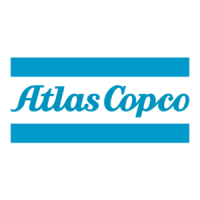
